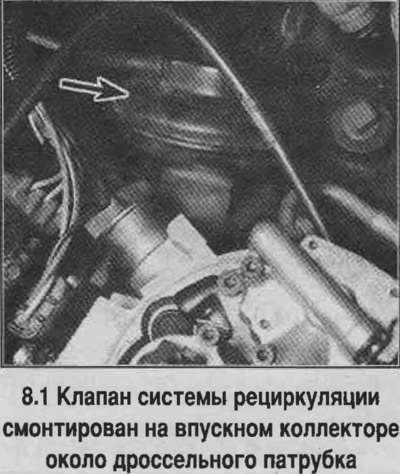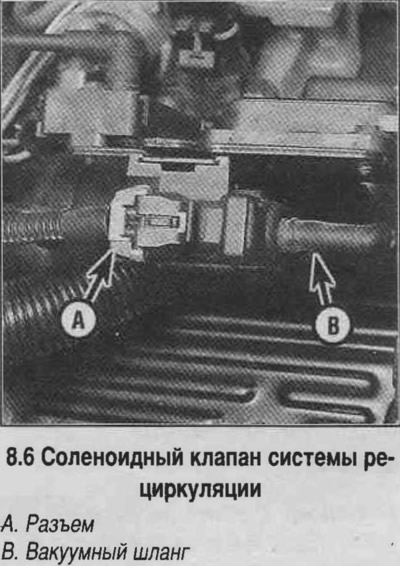Models up to 1995
General description
1. The recirculation system includes a recirculation valve (see photo), solenoid valve and ECM processing unit.

2. The need to check the system arises when the engine becomes unstable at idle speed and traction deteriorates during acceleration. You can independently check the condition of the hoses and valves. The processor unit is checked in a car service.
Main recirculation valve
3. Start the engine. At idle, disconnect the vacuum hose from the recirculation valve and connect a hand vacuum pump.
4. Create vacuum. The engine should lose speed or stall. If the idle speed does not change or changes very little, then replace the valve.
Solenoid valve (only cars up to number 8500 GVW)
5. Turn off the ignition.
6. Disconnect the solenoid valve vacuum hose from the intake manifold and connect a hand vacuum pump (see photo).

7. Create vacuum. If the valve does not hold vacuum, replace the valve.
Solenoid valve (vehicles after number 8500 GVW)
8. Turn off the ignition.
9. Disconnect the solenoid valve vacuum hose from the intake manifold and connect a hand vacuum pump.
10. Create vacuum. If the valve stem moves, disconnect the connector from the solenoid and recheck. If the valve stem still moves, replace the valve.
Models since 1996
11. Digital control of the recirculation system, from the PCM processor unit. There are no pneumatic actuators in the system. The main part of the system is an electronically controlled proportional dosing valve, which includes a stepper motor that moves the stem. Checking and setting up the system is carried out in a car service.
